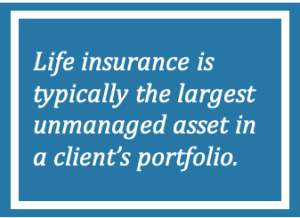The Greatest Guide To Pacific Prime
The Greatest Guide To Pacific Prime
Blog Article
The Main Principles Of Pacific Prime
Table of ContentsThe Main Principles Of Pacific Prime Pacific Prime Things To Know Before You BuyThe Basic Principles Of Pacific Prime Rumored Buzz on Pacific PrimeNot known Details About Pacific Prime

This is due to the fact that the data were accumulated for a period of strong financial performance. Of the approximated 42 million people who were without insurance, almost concerning 420,000 (about 1 percent) were under 65 years old, the age at which most Americans come to be qualified for Medicare; 32 million were grownups between ages 18 and 65, about 19 percent of all adults in this age; and 10 million were kids under 18 years of age, regarding 13.9 percent of all youngsters (Mills, 2000).
These estimates of the variety of individuals uninsured are produced from the yearly March Supplement to the Present Populace Survey (CPS), conducted by the Census Bureau. Unless or else noted, national estimates of people without wellness insurance and proportions of the population with different type of insurance coverage are based upon the CPS, the most widely used resource of quotes of insurance coverage and uninsurance rates.
All about Pacific Prime

Still, the CPS is specifically beneficial due to the fact that it generates yearly estimates reasonably rapidly, reporting the previous year's insurance protection approximates each September, and because it is the basis for a constant set of price quotes for even more than 20 years, enabling analysis of fads in insurance coverage gradually. For these reasons, along with the extensive usage of the CPS in other studies of insurance policy protection that exist in this record, we rely on CPS price quotes, with restrictions kept in mind.

The quote of the number of uninsured people expands when a populace's insurance coverage status is tracked for a number of years. Over a three-year duration beginning early in 1993, 72 million people, 29 percent of the united state population, lacked protection for at the very least one month. Within a single year (1994 ), 53 million people experienced a minimum of a month without protection (Bennefield, 1998a)
Six out of every ten uninsured adults are themselves used. Although working does boost the probability that a person and one's relative will certainly have insurance coverage, it is not a guarantee. Also members of households with two permanent breadwinner have nearly a one-in-ten chance of being without insurance (9.1 percent without insurance rate) (Hoffman and Pohl, 2000).
Pacific Prime Can Be Fun For Everyone
New immigrants account for a considerable proportion of individuals without medical insurance. One analysis has actually connected a significant part of the current development in the dimension of the united state uninsured population to immigrants who showed up in the nation in between 1994 and 1998 (Camarota and Edwards, 2000). Current immigrants (those who pertained to the USA within the previous 4 years) do have a high price of being without insurance (46 percent), but they and their children account for just 6 percent of those without insurance coverage nationally (Holahan et al., 2001).
The partnership between medical insurance and access to care is well established, as documented later in this phase. Although the partnership between medical insurance and health outcomes is neither direct neither straightforward, an extensive clinical and health solutions study literary works web links health and wellness insurance coverage to better accessibility to care, far better high quality, and enhanced personal and population health standing.
Levels of evaluation for checking out the impacts of uninsurance. This conversation of medical insurance protection focuses largely on the U.S. population under age 65 due to the fact that essentially all Americans 65 and older have Medicare or other public protection. Furthermore, it concentrates especially on those with no medical insurance for any kind of length of time.
Rumored Buzz on Pacific Prime
The issues encountered by the underinsured remain in some aspects similar to those dealt with by the uninsured, although they are typically less severe. international travel insurance. Uninsurance and underinsurance, nonetheless, involve noticeably different policy issues, and the strategies for resolving them might vary. Throughout this research study and the five reports to adhere to, the major emphasis is on persons without wellness insurance policy and hence no help in paying for health and wellness care beyond what is offered through charity and safeguard establishments
Health and wellness insurance is a powerful factor influencing receipt of treatment since both patients and medical professionals react to the out-of-pocket price of solutions - https://yoomark.com/content/we-are-award-winning-insurance-intermediary-choice-simplifying-world-insurance-help-you-find. Medical insurance, nevertheless, is neither required nor sufficient to access to clinical services. Nevertheless, the independent and direct effect of medical insurance coverage on accessibility to wellness solutions is well established.
Others will get the health and wellness treatment they need even without wellness insurance, by spending for it out of pocket or seeking it from service providers that provide care cost-free or at very subsidized prices. For still others, medical insurance alone does not ensure invoice of treatment as a result of various other nonfinancial barriers, such as a lack of healthcare companies in their area, moved here restricted accessibility to transportation, illiteracy, or linguistic and social differences.
Get This Report on Pacific Prime
Official study concerning uninsured populations in the United States dates to the late 1920s and very early 1930s when the Board on the Expense of Treatment produced a collection of reports concerning financing physician office brows through and hospital stays. This issue ended up being prominent as the numbers of clinically indigent climbed during the Great Anxiety.
Report this page